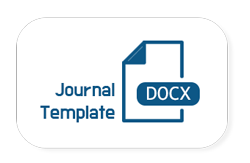⧈ Frequency: Quarterly
⧈ Print ISSN: 2664-4339
⧈ Online ISSN: 2664-4347
⧈ Impact Factor (SJIF) 2023: 7.329
⧈ Arabic Impact Factor 2023: 2.45
Reviewers Instructions
We appreciate applications to join our community of peer reviewers!
The reviewer report should comprehensively critique the submission and consist of much more than a few brief sentences. AISRP does not require a specific structure for reports, however, a suggested format is:
- Summary
- Major issues
- Minor issues
We encourage reviewers to help authors improve their manuscripts. The report should give constructive analysis to authors, particularly where revisions are recommended. Where reviewers do not wish authors to see certain comments, these can be added to the confidential comments of the Academic Editor.
While expectations vary by discipline, some core aspects that should be critiqued by reviewers may include:
- Are the research questions valid?
- Is the sample size sufficient?
- Is there necessary ethical approval and/or consent and was the research ethical?
- Are the methods and study design appropriate for answering the research question?
- Do the experiments have appropriate controls?
- Is the reporting of the methods, including any equipment and materials, sufficiently detailed that the research might be reproduced?
- Are any statistical tests used appropriately and correctly reported?
- Are the figures and tables clear and do they accurately represent the results?
- Has previous research by the authors and others been discussed and have those results been compared to the current results?
- Are there any inappropriate citations, for example, not supporting the claim being made or too many citations to the author's own articles?
- Do the results support the conclusions?
- Are the limitations of the research acknowledged?
- Is the abstract an accurate summary of the research and results, without spin?
- Is the language clear and understandable?
To help authors receive timely reviews, reviewer reports should be submitted via the manuscript tracking system on or before the agreed deadline. Reviewers should contact AISRP if they are unable to meet the deadline so an alternative date can be arranged.
We encourage reviewers to focus their reports on objectively critiquing the scientific aspects of the submission, including the soundness of the methodology and whether the conclusions can be supported by the results. At the end of their review, we ask reviewers to recommend one of the following actions:
- Publish Unaltered
- Consider Minor Changes
- Consider After Major Changes
- Reject
However, it is important to note that the overall decision will be made by the Academic Editor.
For a more comprehensive guide to peer review, we encourage you to read Peer Review Checklist.
This checklist provides a list of requirements for all manuscripts that can be considered suitable for publication. It is important that each of these points are considered prior to returning a reviewer report and if any points are not met, these should be addressed appropriately by the authors before proceeding to publication. This list should serve as a guide and is not intended to be exhaustive. As a reviewer, it is important to have a thorough understanding of the manuscript prior to making a recommendation. Concerns and clarifications that can be addressed by a revision should be detailed in your report, which will be sent to the authors. More serious concerns which you feel should be raised directly to the editor should be provided in the confidential notes section. Any research integrity concerns should be raised to our dedicated team (support@ajsrp.com) who can provide expert advice.
All manuscripts Reviewing
First look
• The content of the manuscript is communicated clearly and appropriately.
• The manuscript is in scope for the journal.
• The manuscript addresses a valid research question.
• The language is suitable for the journal.
Title
• The title provides a clear indication of the focus of the manuscript.
• The title is concise.
Abstract
• The abstract is self-contained, citation-free, and not exceeding 300 words.
• The abstract is an accurate summary of the aims, methods, findings, and conclusions.
• The abstract can be read and understood on its own, separately from the full text of the manuscript.
Introduction
• The introduction clearly summarises the current state of the topic.
• The introduction clearly defines the aim of the study, and this is consistent with the rest of the manuscript.
Main text
• The main ideas or findings of the manuscript are clearly presented.
• The study design and approach have been sufficiently described and appropriately address the research question.
• The authors have included all essential information required to support the findings presented in the manuscript.
• The research conducted is ethical, particularly considering research on animals and humans.
Tables and Figures
• All figures and tables are clear and accurately represent the results.
• All tables and figures are cited consecutively in the text.
• All figures and tables have a descriptive title, clearly explaining what is presented.
References
• All key references are included, with no clear omissions of essential references that are required to support statements in the manuscript.
• There are no inappropriate citations, for example, those that are not directly supporting a statement or claims, or any excessive citations to any researcher (author, editor, reviewer) or journal.
The below lists show additional items that could be considered, depending on the article type
Research Articles Reviewing
• The research question is valid.
• The methods and study design are appropriate for answering the research question.
• The reporting of methods, including any equipment and materials, is sufficiently detailed so that the research can be reproduced.
• It is clear how samples were collected/how participants were recruited. Any potential biases are clearly presented and discussed.
• All experiments have appropriate controls.
• All statistical tests are used appropriately and correctly reported.
• The results are presented clearly and accurately.
• All conclusions are supported by the data presented.
• The conclusions are presented in the context of existing knowledge.
• All significant limitations are clearly presented and discussed.
Review articles
• The review is a balanced and unbiased overview of current understanding and knowledge.
• All key references are included, with no clear omissions of essential references that are required to support statements in the manuscript.
• A wide range of source literature is assessed, with no focus on any particular researcher (including the authors themselves).
• The interpretation and presentation of any results from existing publications are accurate and precise.
Case reports/case series
• The study is suitable for the case report article type. A case report should present no more than 3 individual cases, while a case series can be used to present larger numbers.
• The patient(s) clinical presentation and diagnosis are clearly presented.
• Any treatments are clearly detailed, and clinical outcomes are clearly described.
• The patient(s) are sufficiently anonymized and any potentially identifiable information provided is consistent with the consent statement provided.
• The conclusions are specific to the context of the case(s) presented and do not attempt to make more generalised conclusions for which an alternative study design would be required.
Reporting guidelines
AISRP does not mandate the use of reporting guidelines by authors, however, we encourage reviewers to use relevant reporting guidelines to help assess the submission. The EQUATOR Network provides clinical guidelines, while FAIRsharing lists clinical and general science guidelines. We particularly encourage the use of:
• CONSORT for randomized controlled trials
• TREND for non-randomized trials
• PRISMA for systematic review and meta-analyses
• CARE for case reports
• STROBE for observational studies
• STREGA for genetic association studies
• SRQR for qualitative studies
• STARD for diagnostic accuracy studies
• ARRIVE for animal experiments
If you have questions about a manuscript you are reviewing, please direct them to your
Editorial Assistant, or contact support@ajsrp.com.
Publish Your Reviews
We encourage reviewers to publish their review where an author has opted to make their manuscript available as a preprint. The review can be posted either on the relevant preprint server or on an independent online platform (e.g. PreReview). We ask reviewers to follow ASAPBio’s Recommendations for Reviewers and not to explicitly state the journal or publisher's name within their published review, nor their recommendation for publication, to protect the confidentiality of the peer review process.
Confidentiality
Manuscripts under peer review should be strictly confidential. Reviewers must not share manuscripts or discuss their content with anyone outside the peer review process.
Reviewers may, on request, consult with colleagues from their research group trusting that the confidentiality of the manuscript is maintained. Reviewers should first contact AISRP or the Academic Editor handling the manuscript and note the name of the colleague(s) in the ‘Comments to the editor’ section of their report.
Reviewers will be anonymous to the authors unless they choose to disclose their identity by signing the review report.
Conflicts of interest
Reviewers should decline to review a submission when they:
- Have a recent publication or current submission with any author
- Share or have recently shared an affiliation with any author
- Collaborate or have recently collaborated with any author
- Have a close personal connection to any author
- Have a financial interest in the subject of the work
- Feel unable to be objective
Reviewers must declare any remaining interests in the ‘Confidential’ section of the review form, which will be considered by the editor.
Reviewers must declare if they have previously discussed the manuscript with the authors.
Reviewers are encouraged to comment on authors’ declared conflicts of interest. If there are concerns that authors have not fully disclosed financial, institutional, commercial, personal, ideological, or academic interests, this should be raised in the reviewer report.












